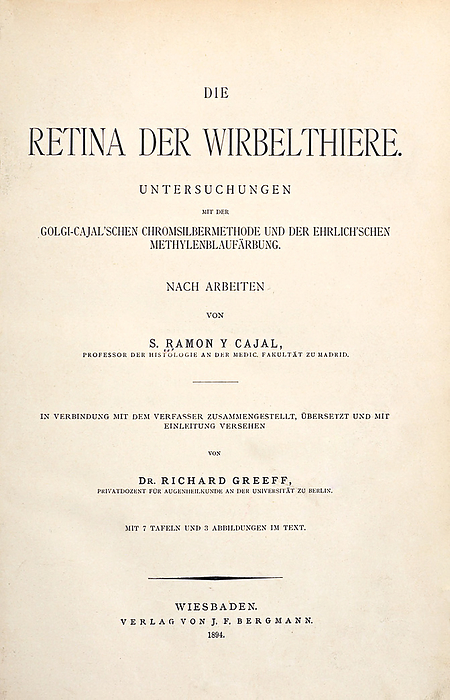
RM
Die Retina der Wirbelthiere title page, 1894
Title page of Die Retina der Wirbelthiere (The Vertebrate Retina), by Santiago Ramon y Cajal. Cajal (1852-1934) was a Spanish histologist and neuroscientist. From 1885 he became interested in the microscopic structure of the brain. By using and improving Camillo Golgi's recently-invented staining methods, Ramon y Cajal studied the brain, spinal cord and retina (a thin layer of neural cells that lines the back of the eyeball). He showed the great complexity of the system and argued that the cells in the nervous system were discrete, having no physical continuity between them. He also studied the degeneration and regeneration of nerves. In 1906 he shared the Nobel Prize for Medicine with Golgi., by US NATIONAL LIBRARY OF MEDICINE/SCIENCE PHOTO LIBRARY

More
Top Categories
